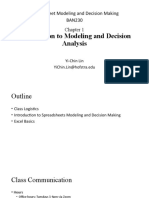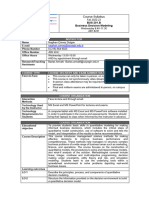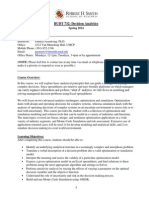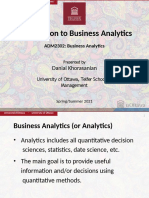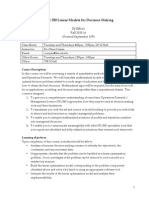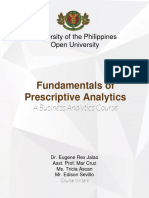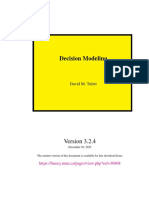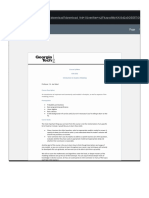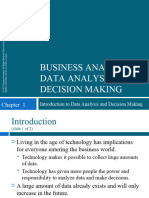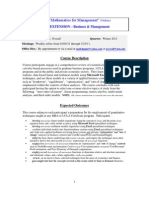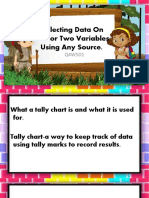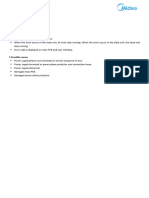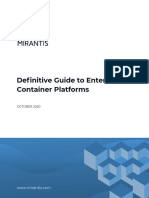0% found this document useful (0 votes)
84 views14 pages01 Introduction
The document outlines the syllabus for a business analytics course, introducing descriptive, predictive, and prescriptive analytics methods and models. It will cover deterministic optimization models like linear programming, network optimization, and mixed integer programming, as well as probabilistic models like simulation and stochastic optimization. Students will learn to translate business problems into formal decision models and implement them in Excel spreadsheets through lectures, cases, exercises, homework assignments, exams, and class participation.
Uploaded by
aaronouyang1Copyright
© © All Rights Reserved
We take content rights seriously. If you suspect this is your content, claim it here.
Available Formats
Download as PDF, TXT or read online on Scribd
0% found this document useful (0 votes)
84 views14 pages01 Introduction
The document outlines the syllabus for a business analytics course, introducing descriptive, predictive, and prescriptive analytics methods and models. It will cover deterministic optimization models like linear programming, network optimization, and mixed integer programming, as well as probabilistic models like simulation and stochastic optimization. Students will learn to translate business problems into formal decision models and implement them in Excel spreadsheets through lectures, cases, exercises, homework assignments, exams, and class participation.
Uploaded by
aaronouyang1Copyright
© © All Rights Reserved
We take content rights seriously. If you suspect this is your content, claim it here.
Available Formats
Download as PDF, TXT or read online on Scribd
/ 14
